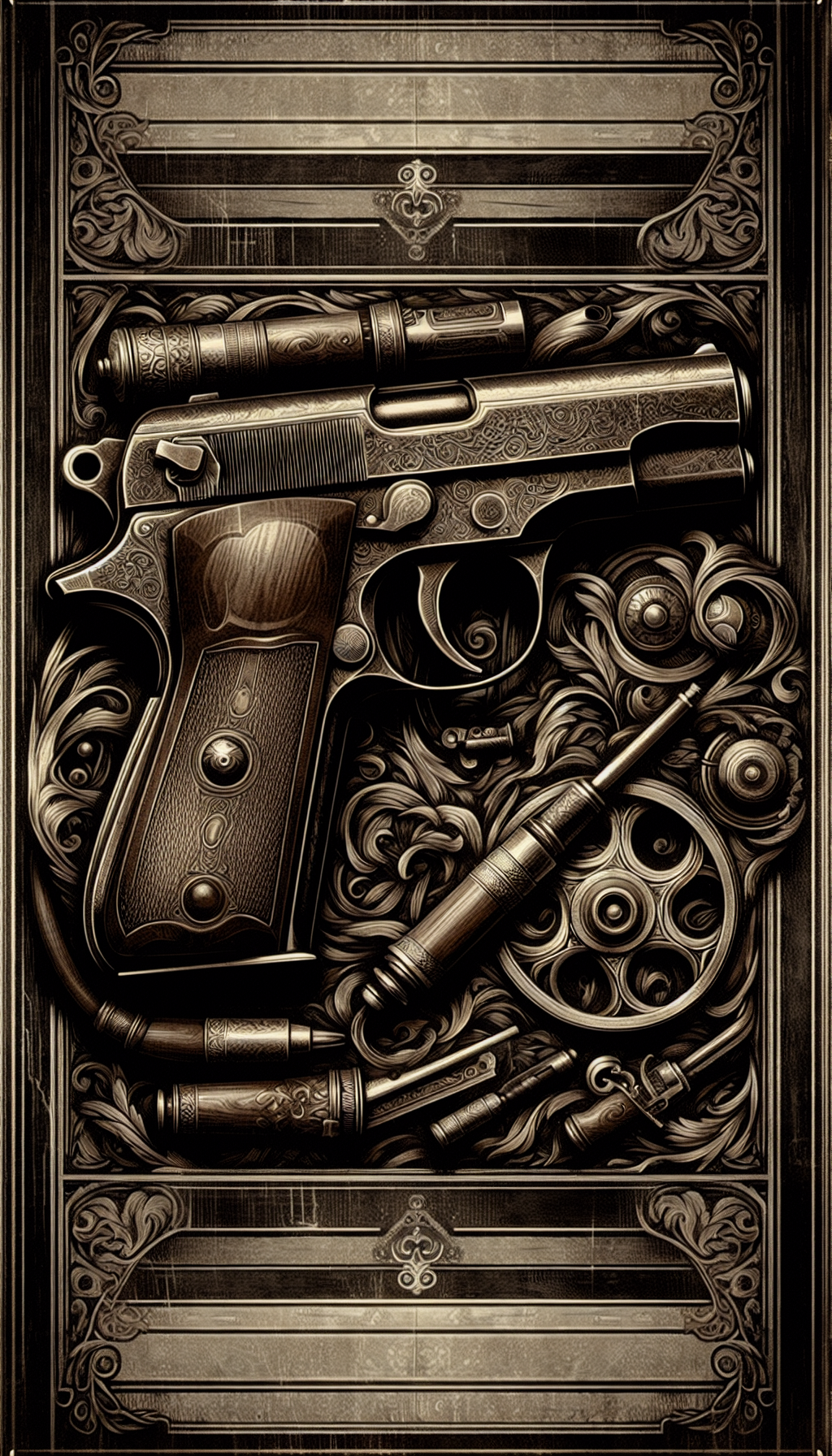A Circa Early 20th Century Eagle Sabre Sword
An “eagle sabre” from the early 20th century is most often a ceremonial, fraternal, or dress sword featuring an eagle motif—typically on the pommel or guard—produced between roughly 1900 and 1930. While the eagle-head pommel has roots in 18th–19th-century officer swords, the early 20th-century examples differ in materials, methods, and purpose. They were made primarily for parade wear, lodge regalia, and presentation, not battlefield use. Identifying and appraising these correctly hinges on understanding construction details, maker and retailer marks, fraternal symbolism, condition risks, and the current market.
Below is a practical, appraisal-focused guide to pin down what you have, when it was made, and what it may be worth.
What Collectors Mean by an “Eagle Sabre” Circa 1900–1930
- Purpose and use: Early 20th-century eagle sabres were mostly ceremonial or fraternal regalia, used by organizations such as the Knights Templar (Masonic), Knights of Pythias, Odd Fellows, GAR (Grand Army of the Republic) veterans, and numerous other societies. They were also purchased as dress swords by militia and cadet units.
- Motif: The eagle appears predominantly on the pommel (the cap at the end of the grip), sometimes as a full eagle’s head with beak and feather detail, or as a stylized American eagle in relief on the guard. National eagles (U.S., Polish, Prussian) also occur, especially on German-made exports.
- Construction vs. earlier “fighting” sabers: Compared to 19th-century combat or field swords, early 20th-century eagle sabres are typically lighter, often nickel-plated, and frequently feature etched panels, presentation cartouches, and organization-specific emblems. Edges are usually unsharpened.
- Terminology: “Sabre” (British) and “saber” (American) are used interchangeably in collector circles for these curved or slightly curved blades. Many early 20th-century examples can even be nearly straight; ritual use dictated appearance more than fighting practicality.
Identification Features: Hilt, Blade, Scabbard, and Symbolism
Look closely at the sword in hand; small details tell the story.
Hilt (pommel, grip, guard)
- Pommel: Eagle-head pommels range from crisp, finely chased heads to more generic, cast forms. High-quality pommels show sharp feathering and a well-modeled beak; budget models can look soft or blurred from inexpensive casting.
- Grip: Often wood with celluloid or bone-like coverings, wrapped with twisted brass or nickel wire. Some are carved bone or ivory-like materials (be cautious—many are celluloid imitations). Celluloid was ubiquitous and can age to cream-yellow with shrinkage cracks.
- Guard: Usually cast brass or “German silver” (nickel alloy), often gilded or nickel-plated. Guards may contain fraternal emblems, mottoes, or be pierced with monograms like “US” or symbolic devices. Knights Templar guards can display crosses and the motto “In Hoc Signo Vinces.”
- Backstrap/ferrule: Check for engraved leaves, stars, or presentation scrolls. Quality examples have tight fitment with minimal gaps.
Blade
- Form: Typically single-fullered with a shallow curve; many are thin and nickel-plated for a bright, parade-friendly finish. Some are blued panels with gilt etching (less common on early 20th-century U.S. fraternal pieces than on 19th-century military swords, but not unheard of).
- Etching: Acid-etched panels may include eagles, flags, laurels, rays, organizational initials (KT, KP), or a member’s name. Etching can identify the fraternal order decisively.
- Maker/retailer marks: The ricasso (base of the blade near the guard) is the first place to look. You may see a Solingen maker (e.g., WKC, Eickhorn, Hörster) on one side and a U.S. retailer (e.g., M.C. Lilley & Co., Pettibone, Henderson-Ames, Ames) on the other.
Scabbard
- Material: Commonly nickel-plated steel with two suspension rings. Earlier 19th-century scabbards were often brass; 20th-century ceremonial swords lean strongly toward nickel-plated steel for a polished look.
- Fittings: Throat with screws, middle band, and drag; look for presentation inscriptions or monograms on the scabbard body or bands. Dents and flaking plating are common age issues.
Fraternal and national symbols
- Knights Templar: Cross and crown, “In Hoc Signo Vinces,” knightly helmets, or the name of a commandery.
- Knights of Pythias: The letters FCB (Friendship, Charity, Benevolence), a triangle or shield design, or armoured knights.
- Masonic: Square and compass; sometimes combined with swords for commandery use.
- GAR and veteran groups: American flags, eagles, and patriotic trophies.
- European national eagles: German and Polish eagles appear on Solingen and export blades for various markets.
These elements distinguish ceremonial, fraternal, and dress sabres from true military service weapons and help narrow the date and origin.
Dating Your Example: Makers, Retailers, and Timeline Clues
Without a date stamp, your best path is through trademarks and corporate name timelines. Focus on the ricasso and guard cartouches:
U.S. retailers and their useful date ranges
- M.C. Lilley & Co. (Columbus, OH): name in use roughly 1865–1925. Later iterations include The Lilley-Ames Co. (c. 1925–1931) and The Lilley Co. (c. 1931–1950s). A blade marked “M.C. Lilley & Co.” and showing 20th-century construction suggests pre-1925; “Lilley-Ames” suggests mid-to-late 1920s.
- Henderson-Ames Co. (Kalamazoo, MI): c. 1893–1920s; merged into the Lilley group by the mid-1920s.
- Pettibone Mfg. Co. (Cincinnati, OH): active late 19th to early 20th century; widely retailed fraternal swords.
- Ames Sword Co.: a venerable American maker/retailer; by the early 20th century Ames also retailed Solingen-sourced blades for regalia.
Solingen (Germany) makers commonly seen on early 20th-century blades
- WKC (Weyersberg, Kirschbaum & Cie): knight’s head logo; large exporter.
- Carl Eickhorn: squirrel trademark in various forms; used throughout the early 20th century, evolving over time.
- E. & F. Hörster, P.D. Lüneschloss, and others: consistent quality; often paired with U.S. retailer marks.
Clues within construction and style
- Nickel-plated steel scabbards and bright-plated blades strongly suggest 20th-century manufacture.
- Celluloid-covered grips with intact or missing wire wrap are typical for 1900–1930.
- Deep, crisp casting and hand-finishing on the hilt generally indicate higher grade and sometimes slightly earlier production within that span.
- Etched personal names, lodge numbers, or commandery names can be cross-referenced to date ranges for a specific organization or chapter.
Avoid confusion with U.S. Model 1902 officer’s swords
- The M1902 officer’s sword is an official U.S. military pattern with a distinct, narrow, often nearly straight blade and a “US” motif guard—not an eagle-head pommel. If your piece has an eagle pommel and heavy fraternal etching, it’s likely regalia rather than the M1902 pattern.
By triangulating retailer name variants, Solingen maker marks, and construction details, you can usually place an eagle sabre comfortably within 1900–1930.
Market Values, Condition Factors, and Care
Typical market ranges (subject to variation)
- Common fraternal eagle sabres (uninscribed, average condition): roughly $150–400.
- Named or presentation pieces, scarcer organizations, or better makers/finish: roughly $400–900.
- Exceptional condition, ornate etching, scarce lodges, or strong provenance: $1,000+ is achievable.
- Outliers exist—especially for documented presentation swords, rare regional commanderies, or deluxe custom orders.
Value drivers
- Maker/retailer strength: Well-regarded combinations (e.g., Solingen maker with Lilley-Ames retailer during the 1920s) add confidence and collector interest.
- Etching and iconography: Strong, legible etching with desirable fraternal or national motifs increases appeal.
- Presentation/provenance: Inscriptions with researchable names, lodge numbers, or events elevate value. Accompanying cases, belts, and knots can help.
- Original finish: Intact nickel plating, crisp gilding, and untouched patina are preferred. Over-polished metal and recent re-plating diminish value.
- Condition of grip and wire: Uncracked celluloid or bone and tight wire wrap are coveted.
Common condition issues
- Plating loss and freckled corrosion: Nickel plating on blade or scabbard can develop pinprick rust if the plating is compromised.
- Scabbard dents: Often found on lower thirds; minor dents are common but affect value.
- Celluloid degradation: Shrinkage, cracks, and “off-gassing” (a vinegar or camphor-like smell) can corrode adjacent metal. Store ventilated and separate from other arms if celluloid is unstable.
- Loose hilts: Guard or pommel looseness from shrinkage or past disassembly.
- Etching wear: Aggressive cleaning in the past can soften etching.
Conservation and handling
- Cleaning: Avoid heavy polishing. Dust first, then use a lightly oiled cloth on bare steel. For plated blades, a gentle wipe with a dry microfiber cloth is often sufficient. If needed, apply a microcrystalline wax sparingly on metal to seal against moisture.
- Rust: Remove active red rust with a very light touch—oil and a soft cloth or very fine oil-impregnated steel wool (0000) only if you’re experienced, keeping off etched panels as much as possible.
- Hilt: Do not soak grips. If celluloid is present, keep cool, dry, and ventilated. Avoid sealed display cases if you detect off-gassing.
- Storage: 40–55% relative humidity is a good target. Store scabbarded, but periodically check for trapped moisture.
- Repairs: Re-plating, re-etching, or re-wrapping can reduce collectible value. Document any interventions.
A careful approach to cleaning and storage preserves both aesthetics and value, especially with fragile celluloid and plated finishes.
Practical Appraisal Checklist
Use this quick pass to structure your evaluation and notes:
- Capture maker and retailer marks on both sides of the ricasso; note exact spellings and logos.
- Photograph hilt details: eagle-head pommel (feathering quality), guard emblems, grip material, and wire.
- Record blade features: etching motifs, any names or lodge identifiers, blade curvature, and fuller count.
- Inspect scabbard: plating quality, dents, ring mounts, and any inscriptions.
- Test tightness: note any play in the guard or pommel; do not force disassembly.
- Assess condition: plating loss, pitting, rust, grip cracks, missing wire, and tip bends.
- Identify the organization: Knights Templar (cross/crown), Knights of Pythias (FCB), Masonic symbols, GAR eagles, etc.
- Date range estimate: combine construction traits with retailer name timeline (e.g., “Lilley-Ames” suggests mid-late 1920s).
- Provenance: look for presentation dates, initials, or commandery numbers; ask the consignor for family history.
- Market tier: place into common/better/deluxe based on maker, ornamentation, condition, and provenance.
Documenting these points will make your appraisal defensible and clear.
FAQ
Q: Is an early 20th-century eagle sabre a military weapon? A: Typically no. Most are ceremonial or fraternal regalia rather than issued combat weapons. They are often unsharpened, nickel-plated, and decorated with fraternal symbols.
Q: How do I tell if mine is European or American? A: Look for marks: Solingen makers (WKC, Eickhorn, Hörster) indicate German manufacture, often with a U.S. retailer (Lilley, Pettibone, Ames). Purely American-made examples exist, but many U.S. retailers sold imported blades with their cartouches.
Q: Should I polish the blade and hilt to make it shiny? A: No heavy polishing. Preserve original plating and patina. Gentle dry wiping, light oil on bare steel, and occasional microcrystalline wax are preferred. Over-polishing reduces value and can erase etching.
Q: What’s the biggest value killer? A: Aggressive restoration (re-plating, sanding), severe pitting on etched panels, and degraded celluloid grips that corrode adjacent metal. Missing scabbards and broken wire wraps also matter, but less than major finish loss.
Q: Are reproductions common? A: Yes. Red flags include modern Phillips screws, crude castings with heavy seam lines, improbably perfect mirror chrome, and fonts/etching styles that look laser-clean. Period swords show honest age: minor plating wear, mellow patina in recesses, and traditional slot-head screws.
—
A circa early 20th-century eagle sabre occupies a satisfying niche: historically evocative, visually striking, and accessible to collectors. By reading the marks, decoding the fraternal imagery, and weighing condition with care, you can date your example, avoid restoration pitfalls, and position it accurately on today’s market.


